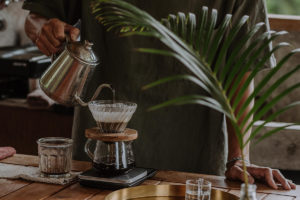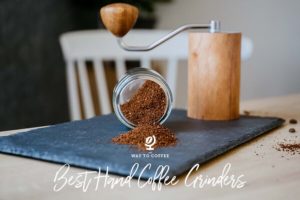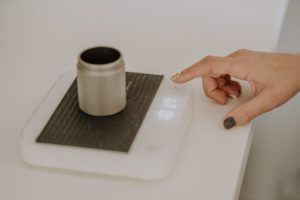
Batch Brew vs. Pour Over – The Pros and Cons Experienced by Coffee Professionals
This article contains affiliate links to Amazon. As an Amazon Associate I earn from qualifying purchases.
Thinking back 15-20 years, I remember my parents going about their morning ritual of brewing coffee on weekends before burying their faces into a newspaper. It was probably how 90% of households in Germany brewed coffee at the time, using an old school batch coffee brewer. I’d watch them pour water in a jug, add ground coffee from the supermarket to a Melitta filter and push a button. Scales or thermometers to measure the precise amount of coffee or temperature of water were unheard of. And the result was, quite frankly, a bitter, dark brew that I’d avoid like the plague.
Needless to say, filter coffee didn’t have the best reputation. It wasn’t until the third wave rediscovered pour over methods that had once before enjoyed popularity during the middle of the 20th century, that the perception of filter coffee changed for the better. I am talking about the Chemex, V60 and Kalita Wave. Especially at the beginning of the third wave this gear helped specialty coffee shops to visibly differentiate themselves from regular coffee shops. Until today, you’ll find either one of these and/or the AeroPress in the majority of specialty cafes. However, I’ve also witnessed more and more third wave coffee shops relying solely on batch brew, one example being Bonanza in Berlin Kreuzberg. Progress and innovation have slowly improved the negative perception of batch brewers. Prominent automated pour over systems are increasingly found in homes of coffee enthusiasts and in third wave cafés. This article is taking a closer look at this battle of man vs. machine. I talked to baristas and coffee shop owners to explore their reasons for preferring one over the other and put together lists of the pros and cons.
The Pour Over Enthusiasts
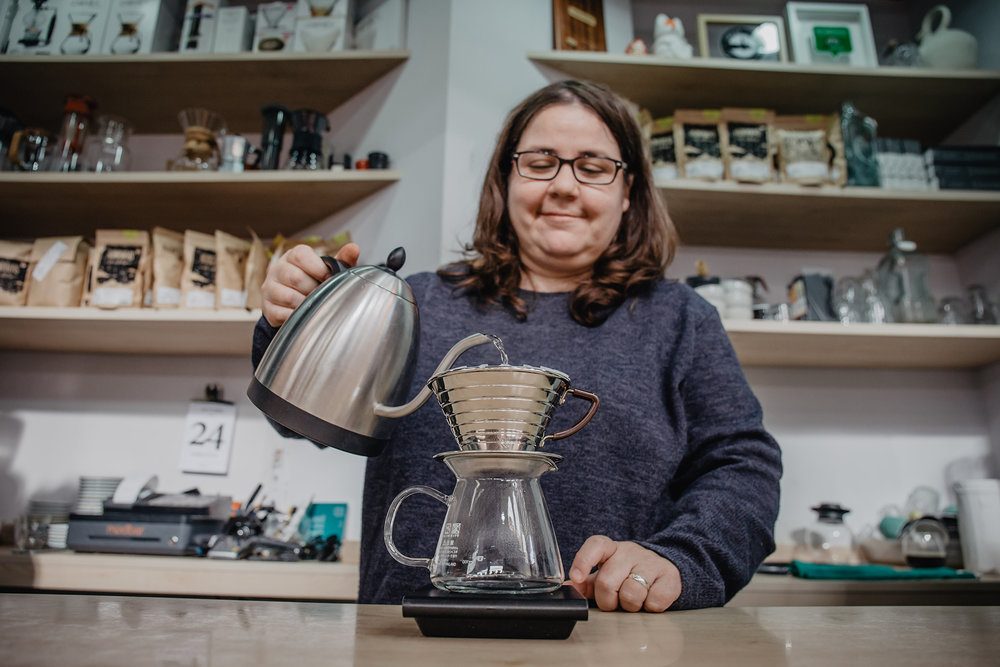
Martina is running Retrogusto, a small take-away coffee place in the Mercado Central of Valencia. Despite the fact that it can get incredibly busy, she keeps pour-overs on the menu. Recently, Retrogusto has introduced batch brew for customers who are on the run. Nevertheless, she prefers manual brews when time allows because it allows her to control every valuable of the brew.
Wattanaphon Khamson is a barista at Omnia Cafe in Chiang Mai. His main reason for preferring pour over rather than batch brew is that the manual brew allows him to experiment with brewing techniques and adjust quickly to the particular coffee beans he is brewing. As an example, Wattanaphon seeks to improve the taste of every coffee by adjusting the ratio of the coffee and water during the blooming stage and the amount of seconds he allows for blooming. While it is mostly possible to adjust the settings of the batch brewer to do the same and to save different profiles for different kinds of coffee (depends on the kind of batch brewer of course), he finds it easier to experiment manually. In the Asian countries where I’ve researched the coffee scene – Thailand, Taiwan and Japan – batch brew is almost unheard of and especially in Japan and Taiwan pour-overs are incredibly popular.
Here’s what other coffee professionals thought:
The Pros
By manually brewing coffee the barista can create an experience for customers. Apart from the actual taste of the coffee, the human element can be a decisive factor when it’s about whether a customer would come back to a coffee shop or not.
The manual brew allows the barista to control and adjust every valuable of the brewing process in the moment.
When time allows, the barista can customize the brewing depending on the preference of the customer.
Some cafés offer a variety of single origin beans, sometimes as many as 10 or 12. By doing pour-overs the barista can make quick adjustments to each brew depending on the coffee beans.
Pour-over gear, such as Chemex or AeroPress, is much more affordable than decent batch brewers. However, the time spend preparing pour-overs might be more costly than using batch brewers.
The Cons
When a café is crowded and there is a number of people ordering pour-overs manual brews can become very time consuming and increase waiting times for customers.
Consistency is a challenge, especially during rush hours when the barista doesn’t have enough time to give your brew the attention it needs.
While baristas put more effort and time into manually brewing coffee for their customers, many customers might not actually taste the difference between a manual brew and an automated brew.
If too much emphasis is put on the pour over method it might end up distracting the customer from the actual coffee and its qualities.
The Batch Brew Enthusiasts
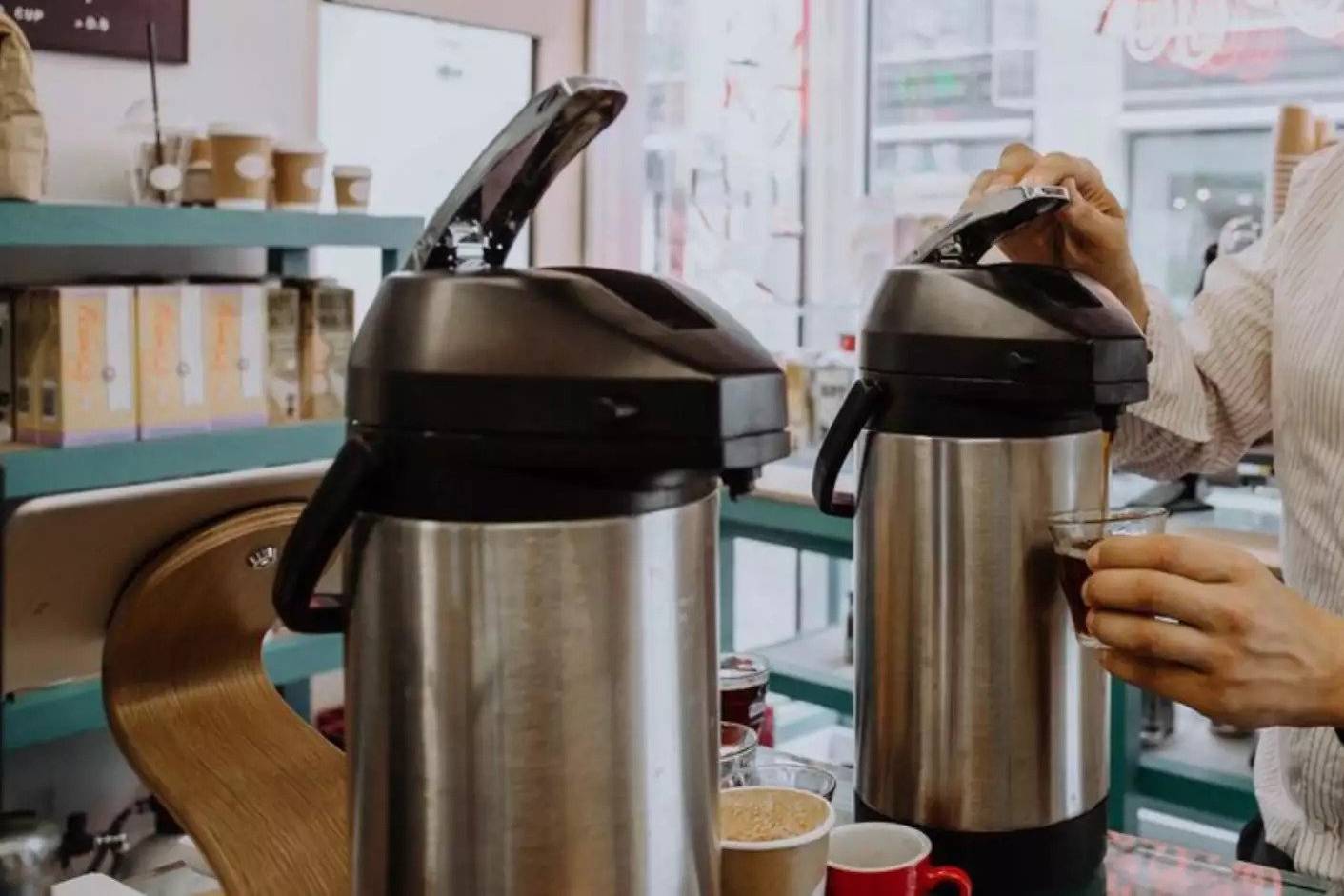
As opposed to Scandinavian countries or Taiwan and Japan, Switzerland has still a very espresso-centered coffee market. The people behind Just Coffee in Zurich are seeking to change the perception of filter coffee by making it more accessible to the average coffee drinker. To achieve this, they are sticking to batch brew only. “It is quick and easy to make batch brew. We brew using the FETCO model 2131, which is a novelty in Switzerland, with an output of 2 liters of specialty coffee in 6 minutes”. On Saturdays, Just Coffee organizes “democratic cuppings“ using batch brewed coffee. “We let people in the street taste the difference between coffees from Brazil, Ethiopia, or Kenya without the slurping sounds and the hype.” Just Coffee is a takeaway coffee place. “People want their coffee fast and sometimes without the barista’s intervention. This is why we love our “self-service” batch brew pots where people can just walk up and serve themselves.”
The German Barista and Coffee in Good Spirits Champion Nicole Battefeld, who is a brand ambassador for Moccamaster, had a very interesting perspective to share: “A batch brewer is the perfect device to compare various coffee roasts, grind sizes, or brewing recipes with one another. The fact that the machine does exactly the same every single brew allows coffee professionals to test and experiment with different parameters.”
Here’s what other coffee professionals thought:
The Pros
Once the recipe is set and the coffee has been dialed in, the same quality will be achieved batch after batch, quick and easy.
If the coffee shop is high volume, batch brew guarantees consistency for each cup of coffee.
Even though a decent batch brewer will cost much more than pour over gear, time and consequently money might be saved in the long run.
The Cons
Baristas might engage less with customers when serving batch brew rather than pour-overs.
At the end of the workday, there will be more coffee wasted with batch brewers if it doesn’t sell out.
Depending on the practices and standards of each coffee shop, there is a chance that your batch brewed coffee is not fresh. The longer it sits in the brewer the lower the quality becomes.
Serving a variety of filter coffees requires almost an equal amount of batch brewers in order to serve a range of filter coffees in a timely manner.
When deciding on whether to go for batch brew or pour-overs in a café, coffee shop owners might want to consider offering both. The specialty coffee lover Dani Bordiniuc used to work as head barista at Lot 61 in Amsterdam, a high-volume specialty coffee shop in a prime location. “I think it depends on the environment you’re working in, how many staff members are behind the bar, and how busy it gets. At the end of the day, you want to make customers happy and serve a consistently delicious filter coffee. I’m currently working in a café that can become extremely busy at times. Therefore, in such moments, when there are so many things to look after, I’m recommending batch brew. It’s always fresh, delicious and above everything else, it’s consistent. As much as I hate disappointing a customer for not being able to prepare it manually, I’d equally dislike serving a subpar pour-over coffee. On the flip side though, when it’s a quiet moment in the day and I can focus 100% of my attention on the brew bar, I’m more than happy to prepare and serve a manual pour-over.”
